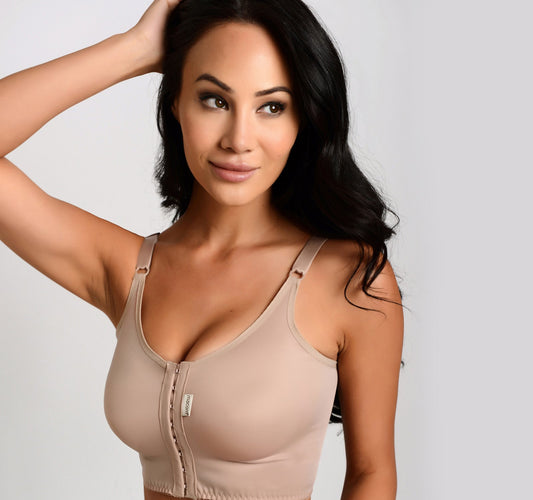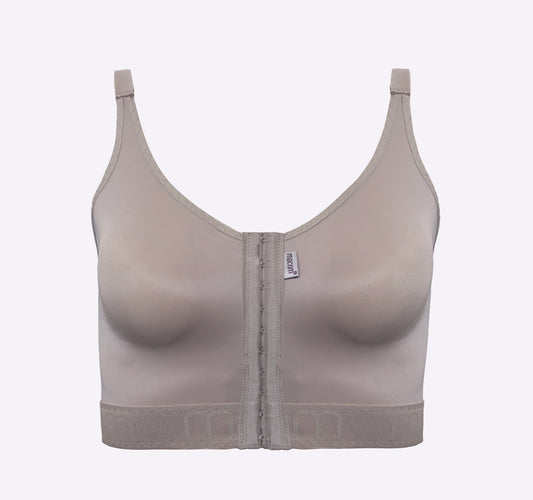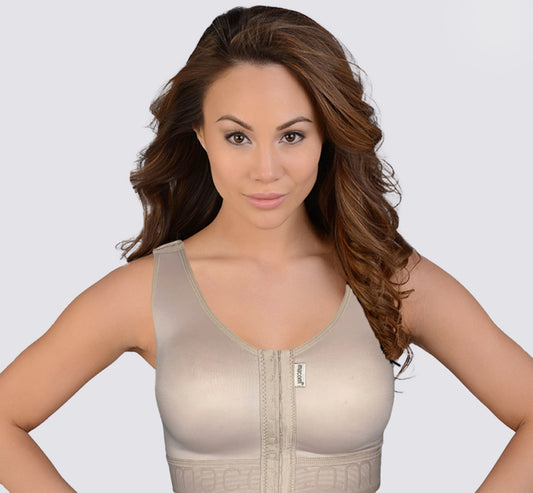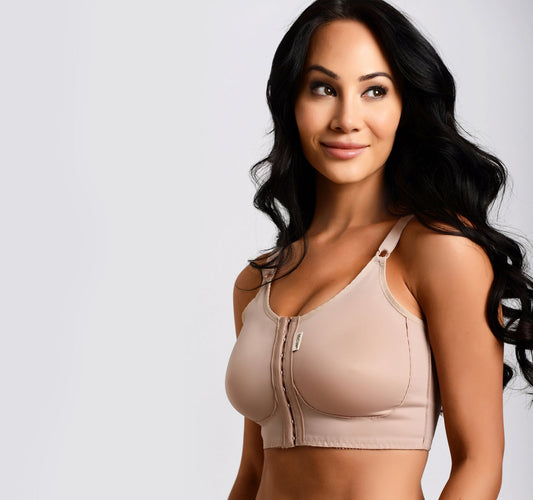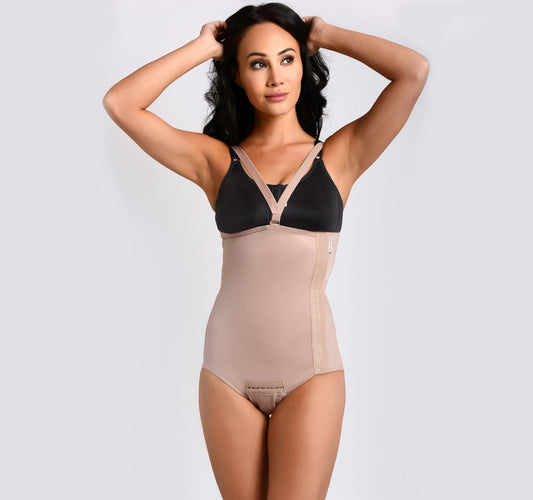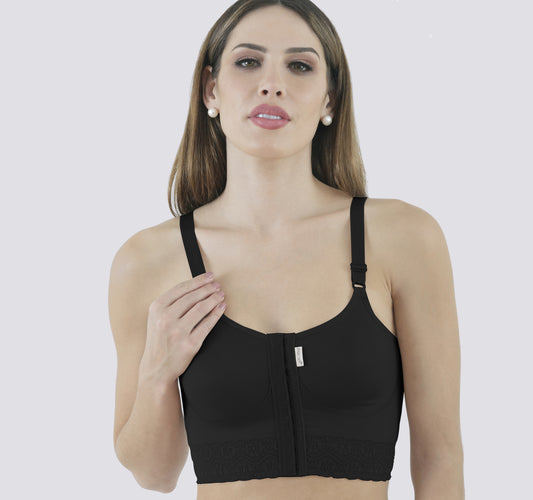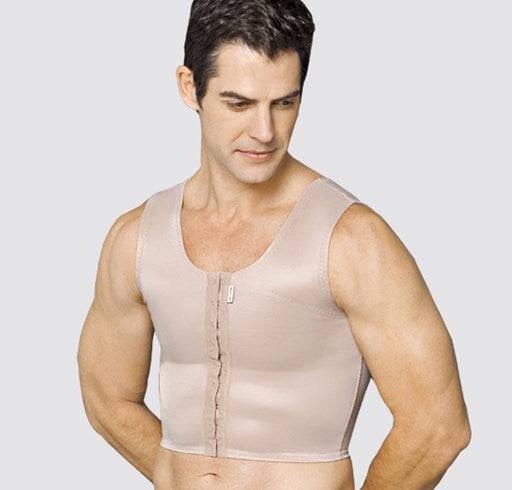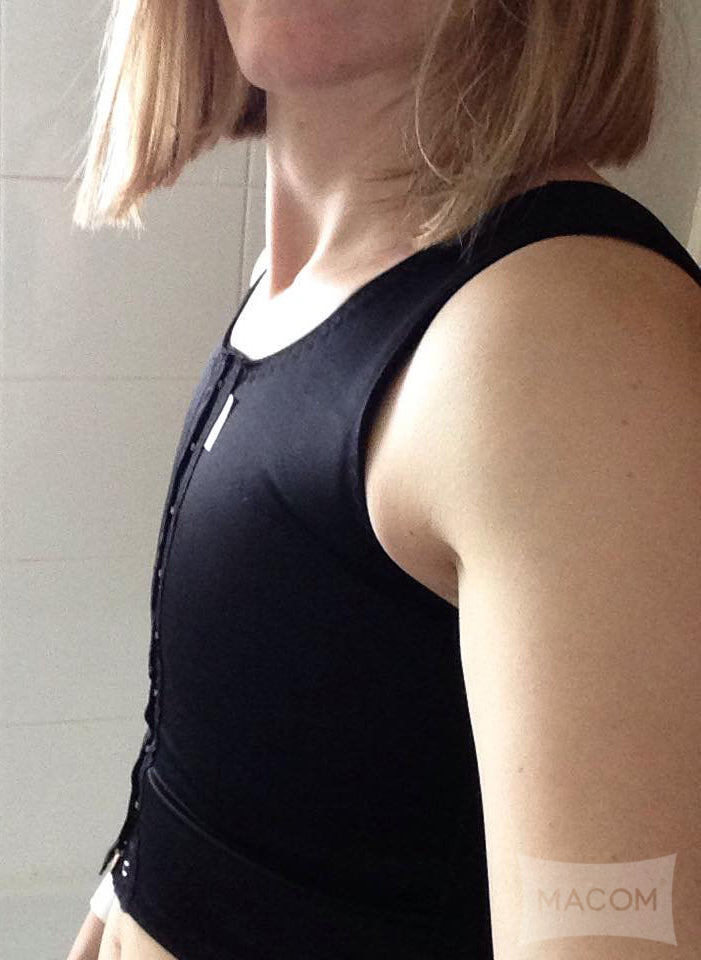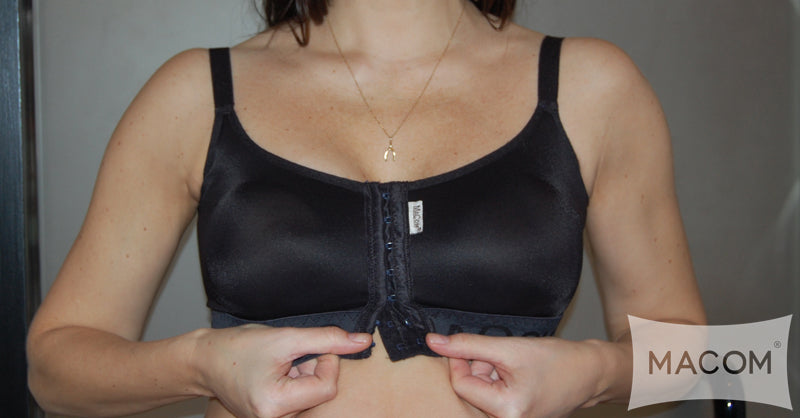Breast reduction surgery is a transformative step for many women, often pursued for relief from physical discomfort or to achieve a more balanced body shape. However, what happens after the surgery is just as important as the procedure itself.
This guide is designed to walk you through the breast reduction recovery process in detail, helping you understand what to expect from the first few hours post-op through to long-term healing. Whether you're preparing for surgery or supporting someone else through it, you’ll find practical, stage-specific advice throughout and answers to frequently asked questions.
What To Expect After Breast Reduction Surgery
Breast reduction is a major surgery that requires careful recovery. While the idea of downtime might sound daunting, the good news is that with the right preparation, support and understanding of what to expect, the healing process can be smooth and relatively quick.
How Long Does It Take To Fully Heal From A Breast Reduction?
You can expect the majority of your healing from breast reduction surgery to take place in the first 6 to 8 weeks. Swelling often lingers for 3 to 4 months, and your scars will continue to mature and fade over the course of 6 to 12 months.
You’ll likely be up and moving gently within a few days, but returning to full fitness or manual work typically takes around 8-12 weeks – speak to your surgeon about when is right for you in your recovery. Office-based or light duties may be possible after 2 to 3 weeks, depending on your recovery progress.
What To Expect Immediately After Breast Reduction Surgery
Right after breast reduction surgery, your body will begin its healing journey. It’s helpful to know what to expect during this early stage so you’re not caught off guard.
You’ll wake up from anaesthesia with bandages on your chest and, in many cases, plastic drainage tubes to prevent fluid build-up. These are usually removed after 1 to 2 days, and you can typically return home once that’s done. Stitches may be dissolvable or require removal at a follow-up appointment, typically around 2 weeks post-op.
Pain, swelling, and infection control are managed with medication, some administered in hospital, with further prescriptions provided for home use. Your surgeon will schedule a post-op review to ensure healing is progressing as expected.
The First 72 Hours
The first three days after surgery are critical. You’ll need to:
- Avoid heavy lifting (stick to light objects only)
- Get help sitting up or moving around
- Wear your breast reduction bra over your dressings for support and stability
Normal symptoms include swelling, bruising, numbness and discomfort. These should all be manageable with your prescribed medications. For specialised post-op bras, explore macom’s breast reduction bra collection.
Recovering From Breast Reduction Surgery At Home

The at-home phase of your breast reduction recovery is just as important as your hospital stay. Having a trusted friend or family member stay with you is essential, especially for the first week, to help you avoid overexertion and prevent complications like wound reopening.
To stay comfortable and supported:
- Use extra cushions to elevate your upper body when lying down
- Keep essentials within arm’s reach to avoid stretching or bending
- Avoid lying completely flat or on your stomach until cleared by your surgeon
Breast Reduction Recovery Timeline
Milestones During The First Month
- First two weeks: Expect significant swelling and breast tenderness. Itchiness and dryness at incision sites are common as the skin heals.
- Weeks 4–6: Swelling should gradually reduce and tenderness will ease. You may begin light exercise like walking.
- 3–6 months: Scars start to fade, shape stabilises and breasts begin to feel more natural. Most patients return to full activity during this period.
Long-Term Breast Reduction Recovery
Breast reduction recovery can extend well beyond the visible milestones. It's normal to experience:
- Occasional hypersensitivity or numbness around the incision area
- Persistent or cyclical swelling, especially before your period
- Scars that are raised or discoloured initially, but will typically fade with time
Breast Reduction Recovery Advice
The following expert-backed tips will help you recover as safely and quickly as possible.
Wound Care & Scar Management
You’ll usually be advised to start gently cleaning your incisions a few days post-op depending on your surgeon’s guidance. Clean on a daily basis for the first few days and then as needed.
To properly clean your incision area, you should:
- Carefully remove any gauze, dressing or compression garments.
- Clean the area with mild, unscented soap, lukewarm water and a soft clean cloth.
- Pat the area dry, don’t rub, with a clean towel.
Avoid soaking your incision scars in the bath, and avoid applying perfumed products or creams until wounds have closed.
Once fully healed, silicone scar treatments or prescribed creams can help improve scar appearance. They should be applied after cleaning.
Pain, Swelling And Sensation Changes
You may feel soreness at incision sites and around the nipples. Swelling and bruising are expected and can persist for several weeks.
Be alert to:
- Sudden increases in swelling or pain
- Severe redness or discharge from the incision
- Fever or chills
These may signal infection or complications, contact your surgeon immediately.
Breast Reduction Bras & Supportive Compression Garments

Supportive post-surgical bras help reduce swelling, support healing tissues and improve final results. Wear your post-op bra continuously for at least 6 weeks, unless told otherwise.
When choosing a bra:
- Opt for wire-free, front-fastening designs
- Look for compression support tailored to breast surgery
Browse macom’s full range of comfortable, supportive, medical-grade breast reduction bras.
Sleep Positions
Sleep on your back with your upper body slightly elevated for the first few weeks of breast reduction recovery. This helps reduce swelling and protects the incision area.
Avoid side or stomach sleeping until your surgeon gives you the go-ahead. Use pillows for extra support to prevent rolling.
Resuming Normal Activities

Resuming normal activities after surgery is a staged process. In general, this is what you can do and when during your breast reduction recovery:
- Driving: Usually safe after 2–3 weeks, once arm movements are comfortable and pain-free.
- Desk work: Often resumed after 2 weeks, depending on how you feel.
- Physical jobs: May require 4–6 weeks of recovery.
- Exercise:
- Walking: from week 1
- Light cardio or yoga: after 4 weeks
- Strength training and high-impact sports: wait at least 6–8 weeks
Listen to your body and ease back into activities.
Mental & Emotional Recovery
Breast reduction can trigger a mix of emotions. You may feel joy, relief or even moments of uncertainty about body image. Common experiences include:
- Body adjustment concerns
- Mood swings or low moods during healing
- Anxiety about scars or appearance
Support from friends, family or professional counselling can make a big difference during this period.
Signs Of Complications To Watch Out For
Seek medical help if you experience:
- Fever, pus or spreading redness (infection)
- Blood clots (leg pain, swelling, chest pain, shortness of breath)
- Wound separation or excessive bleeding
- Breast shape asymmetry or unusual lumps
Long-Term Results & Revision Breast Surgery
The final results of your breast reduction will take time to see. You can expect:
- At 3 months: You’ll start seeing clearer results and your breast shape will stabilise
- At 6 months: Scars will begin to flatten and fade
- At 12 months: You’ll see the final aesthetic outcome
Some patients may seek minor revision surgery for symmetry or scar refinement. Discuss options with your surgeon if desired.
Find Medical-grade Compression Bras To Support Your Recovery
If you’re preparing for breast reduction surgery, the key to recovery is preparation and patience. Choose supportive garments, follow medical advice and let your body heal at its own pace. For trusted compression bras and recovery garments, explore macom’s range of comfortable and supportive breast reduction bras.
Breast Reduction Recovery FAQs
Here we answer some of the common queries patients have about breast reduction recovery.
What Happens If You Don't Wear A Compression Bra After Breast Reduction?
Not wearing a compression bra after breast reduction surgery can significantly increase swelling, delay your healing and make discomfort worse. It may also affect your long-term results.
Why Is My Stomach Bigger After Breast Reduction?
Post-operative swelling can temporarily affect your abdomen due to disruption of the lymphatic system during surgery. This is a common and normal response, and should gradually resolve as healing progresses. If you have any doubts during your breast reduction recovery, consult your surgeon.
How Much Weight Do You Lose After Breast Reduction Surgery?
The weight loss after breast reduction surgery depends on the volume of tissue removed. On average, this ranges from 2 to 8 pounds (0.9 to 3.6 kg). However, this is not a weight-loss procedure and overall body weight changes are typically minimal.






